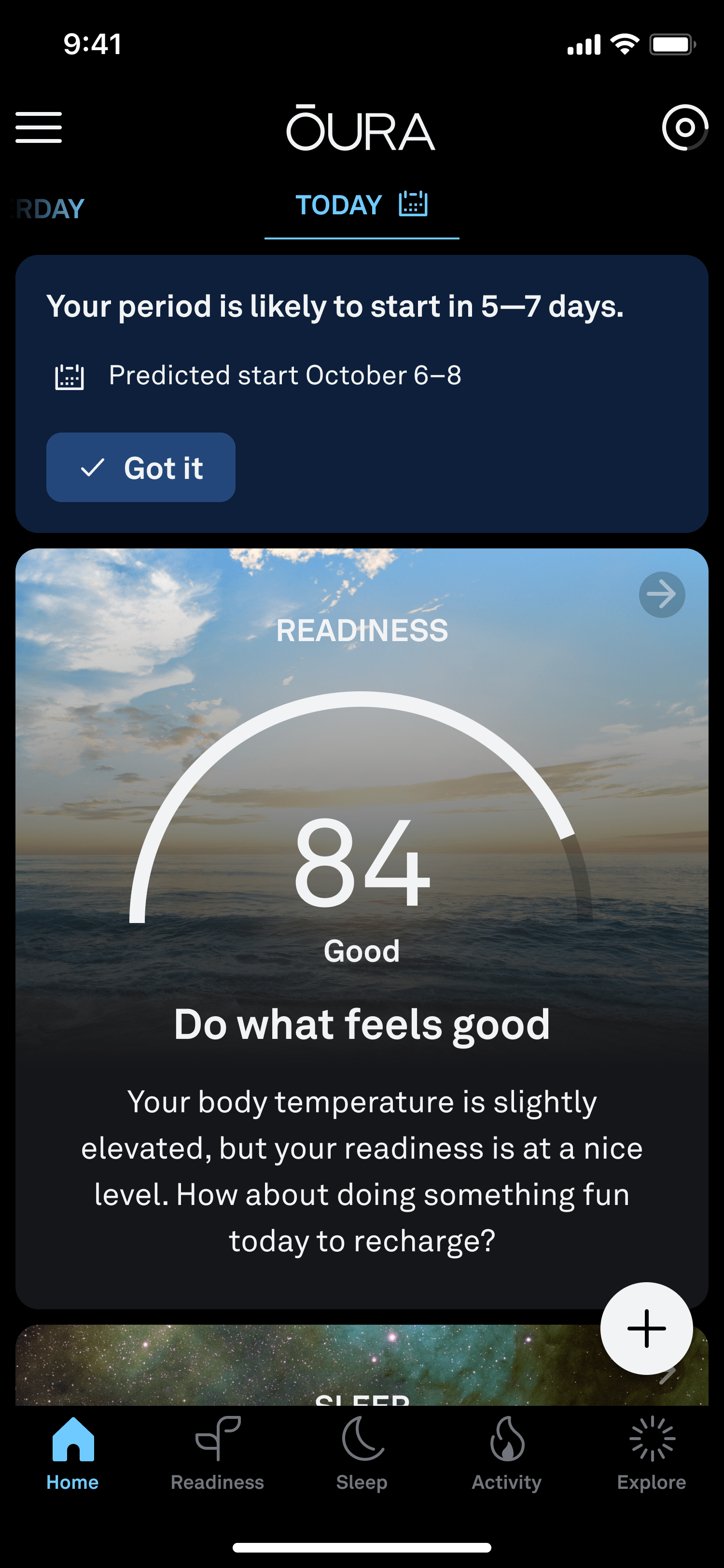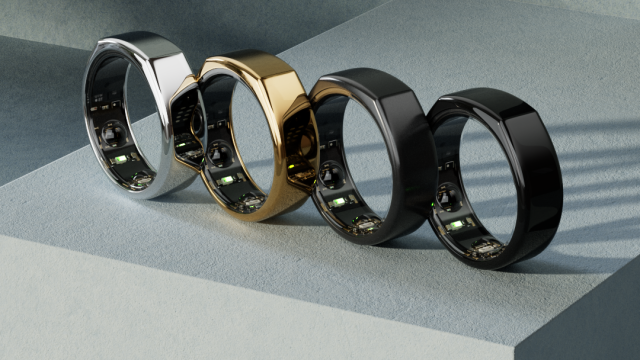You might have seen headlines last year about a smart ring being used by NBA and WNBA players as part of reopening plans to keep athletes safe during the the pandemic. Maybe you read a few studies that mentioned a smart ring that might be able to detect infections — including covid-19 — early. Or perhaps you saw it on Prince Harry’s finger in the tabloids. That ring was the Oura Ring, and today the company’s announcing a slew of new updates for the third generation of its sleek, subtle, health-focused wearable.
In our review of the Oura Ring, we noted that the device worked best as a sleep tracker. That’s because it didn’t do much else — it was primarily focused on giving folks deeper insight into how well-rested they were. This time around, Oura Health is adding green and red LED sensors in addition to its existing infrared sensors. As a result, users will be able to view daytime and live heart rate data. Later this year, Oura Health says the ring will also be capable of recording heart rate during runs, walks, and bike rides. Users will then be able to view post-workout insights, as well as activity data like location, distance, and heart rate recovery. Another heart rate feature coming later this year is “restorative heart rate,” which measures whether users are taking the appropriate amount of breaks during the day to combat stress.
While the Oura Ring is adding more fitness tracker features, it’s not straying from its primary mission: sleep. The company says that in 2022, it’ll add new and improved sleep stage-tracking, as well as SpO2 data from the new red LEDs. The company says it won’t spot-check SpO2 readings like you see on the Apple Watch Series 6/7 or the Samsung Galaxy Watch 4. Instead, it’s more in line with what Fitbit does: analyse your blood oxygen levels as you sleep for more accurate sleep quality data.
Tracking Temperature
On top of the new heart rate sensors, Oura Health says it’s also added seven research-grade temperature sensors. The company claims that translates to minute-by-minute readings that may help users notice if they’re getting sick. There is some evidence to indicate that wearables may be able to detect infections early, but it should be noted that this particular application is still in the early stages of research.

The new Oura Ring is also adding period predictions based on body temperature readings. The company says it can predict a user’s next cycle 30 days in advance, and alert them six days before it starts. In the app itself, the prediction appears as a notification that identifies a window for when a user’s period is expected to start.
Oura Health also says its period prediction feature is different from others on the market, as it adapts based on how your cycle changes over time. The feature is admittedly intriguing. For starters, it relies on continuous temperature monitoring, as opposed to other period-tracking apps, which use the calendar method or require you to input readings from basal body thermometers. It also theoretically reduces human error. Using an external thermometer generally requires a person to take their temperature at the same time every morning, under the same conditions, and several factors can throw off a reading. The company was clear, however, that the Oura Ring 3 is meant to help users be more in tune with their bodies and track cycles. It’s not meant to be used as a contraceptive method, though it didn’t rule out fertility planning features down the line. The company actually said it intended to invest further in women’s health, which is a historically underserved space. It also pointed to a recent study on early pregnancy detection by the University of California San Diego that used Oura Rings, as well as another study on using heart rate variability and body temperature to predict luteinizing hormone surges (the thing that spurs ovulation).
Lastly, Oura Health says it’s expanding its educational content as well. Later this year, the company will launch a new library of over 50 “science-backed videos and audio sessions” designed to help users understand and interpret their data. We love to see more context with the wearable data dump.
It’s Still a Ring
Design-wise, the Oura Ring 3 isn’t rocking the boat. It looks similar to the previous generation, though it supposedly has 32 times the processing power. Also, despite cramming in several more sensors, Oura says the ring’s size and weight remain unchanged, and that battery life is still an impressive 7 days.
There has to be a catch, right? Bingo. Unlike previous versions of the Oura Ring, the new one comes with a six-month trial… because you now have to pay a subscription. The ring itself costs $US299 (A$399), while the monthly subscription is $US6 (A$8). If you already have an Oura Ring, the company says any user who upgrades will receive a free lifetime membership. As irksome as some might find this, subscriptions are becoming increasingly common in the wearables and fitness space and this is relatively affordable in comparison.
The Oura Ring 3 is available for preorder today in four colours: gold, silver, black, and stealth. It’s expected to ship in mid-November.
